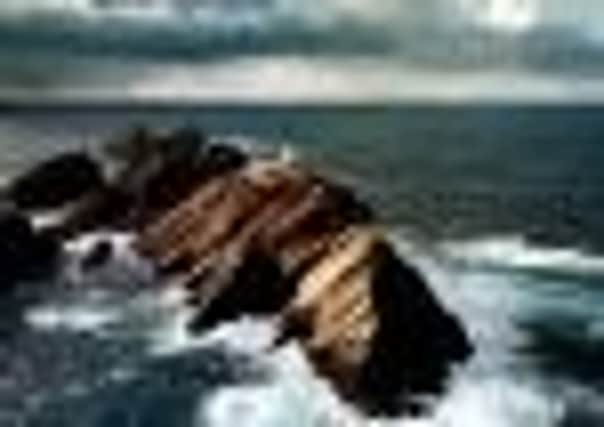Island of the week: Shetland


Location: A sub-arctic archipelago between the North Sea and the Atlantic Ocean, Shetland lies at the centre of the triangle made up of Scotland, Norway and the Faroe Islands. One hundred miles from the Scottish coast, 225 miles west of Norway, and 170 miles south east of the Faroes, it lies closer to Bergen in Norway than to Edinburgh, 301 miles south, and is only 400 miles south of the Arctic Circle.
Population: 22,210.
Meaning: The oldest version of the modern name Shetland is Hetlandensis, recorded in 1190. In 1431 it was recorded as Hetland, becoming Hjaltland in the 16th century. As Norn, the now-extinct North Germanic language spoken in Orkney and Shetland, was replaced by Scots, the ‘Hjalt’ prefix was replaced by the Scots letter ‘yogh’, which had the same pronunciation as the Norn ‘hj’. ‘Yogh’ fell out of use and was replaced with the similar-looking letter ‘z’, hence the place name was written as ‘Zetland’, which gradually morphed into Shetland.
Advertisement
Hide AdAdvertisement
Hide AdHistory: Shetland has been inhabited for at least 5,000 years. Before the Norse invasion in the 9th century AD, Shetland was occupied by Pictish peoples, and there are many physical remains of their presence including settlements, field systems, brochs, carved stones and silver objects. From about 800, the Pictish peoples were usurped by waves of immigration from Scandinavia, as part of a westward expansion that saw Vikings colonise the Hebrides and large parts of northern Scotland, parts of northern Europe, the Faroe Islands, Iceland, Greenland and North America.
Shetland remained under Norwegian control for 600 years, until in 1469, King Christian I mortgaged Shetland to the Scottish crown to raise the dowry for the marriage of his daughter Margaret to King James III of Scotland. James went on to annex Shetland to the Scottish crown in 1472.
However, Shetland’s links with Scandinavia remain very much in evidence today. The Shetland dialect is a mixture of Scots and Old Norse, and the accent can sound more like Norwegian to the untrained ear. Shetland’s heritage and traditions are a mixture of Norse and Scots, as is its flag – a white Nordic cross on a sky blue background, which looks like a mix of the Saltire and the Norwegian flag. This flag is seen flying from many houses, and Shetlanders have a strong sense of community and identity, as being distinct from the rest of the UK.
What to do: Shetland is a National Scenic Area, and nowhere on the islands is more than three miles from the sea. They are host to a huge population of seabirds and marine life, including seals, otters and 100,000 pairs of Puffins, known locally as Tammie Nories. Take a Seabirds and Seals cruise round Noss National Nature Reserve, which departs seven days a week from Victoria Pier Slipway at Lerwick, at 10am and 2pm.
At Eshaness you can see the best example of a section through the side of a volcano in the UK, and discover more about Shetland’s volcanic past and unique geological make-up on the volcano trail.
The strikingly-designed Shetland Museum and Archives in Lerwick tells the story of the islands, from their geological beginnings to their modern day industries, through archives of photos, maps, books and journals, covering archaeology, culture, folklore, genealogy, language, literature, religion, the sea and war.
The sight of the aurora borealis is very common in Shetland, particularly in the winter months when the sun is low in the sky and the nights are long. Between May and August it never gets completely dark in Shetland, and the longest day lasts for 19 hours.
Advertisement
Hide AdAdvertisement
Hide AdShetland puts a strong emphasis on local food, and highlights include the salmon, haddock, mackerel, herring and mussels, as well as Shetland lamb, which has EU-protected status. What you won’t find, are any of the burger or coffee chains that are ubiquitous elsewhere in the UK.
If you are visiting in January, the legendary fire festival Up Helly Aa is not to be missed. Held annually on the last Tuesday in January to celebrate the end of Yule, it’s a blaze of light and colour that sees nearly 1000 colourfully-dressed ‘guisers’ follow the jarl’s squad of Vikings and their longship through the dark streets of Lerwick, before throwing their flaming torches into the galley.
How to get there: There is a nightly ferry crossing from Aberdeen to Shetland, and in the other direction, which takes between 12 and 12 and a half hours, and there are five flights on weekdays from Aberdeen. There are also air links twice daily from Orkney, Inverness and Edinburgh, and once daily from Glasgow. Loganair operates air services on behalf of FlyBe and the Sumburgh, 25 miles south of Lerwick, is Shetland’s main airport.